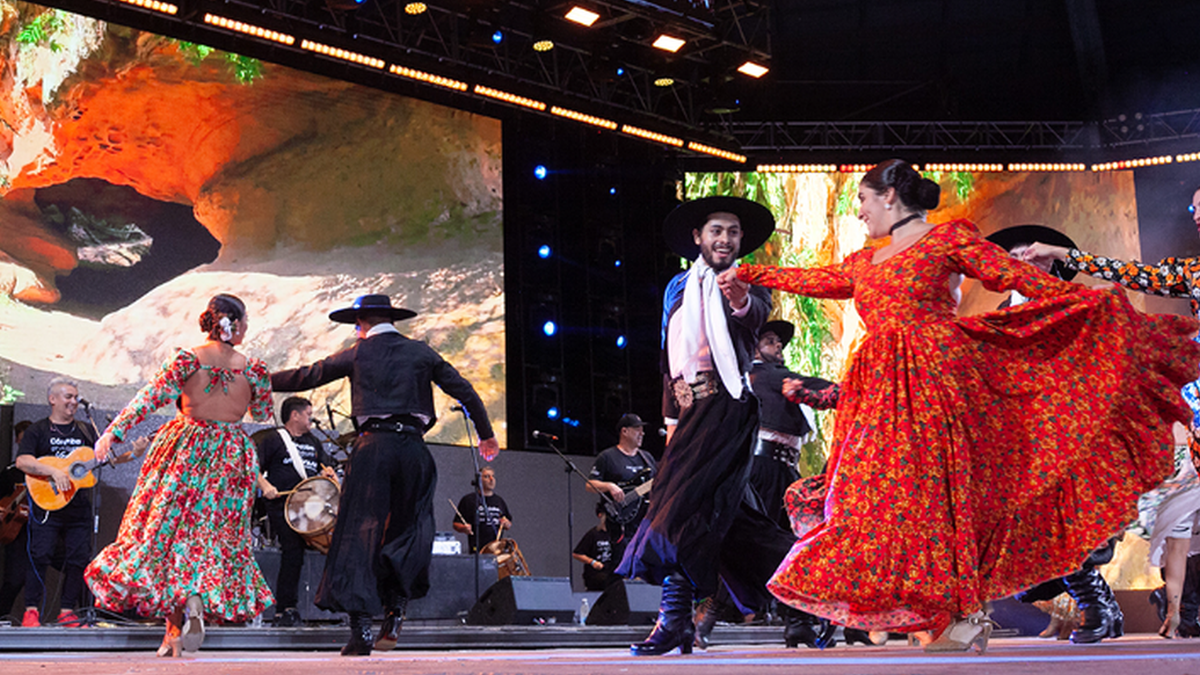The first record of the word “folklor” dates back to August 22 of 1846 when the English archaeologist William John Thoms used it in a publication of The Athenaeum in London. UNESCO decided to set that date as the “International Folklore Day.”
A century later, also on August 22, Augusto Raúl Cortázar He brought together representatives from 30 countries at the First International Folklore Congress. During the day he paid tribute to “Argentine folklore father” Juan B. Ambrosetti who was born on that date in 1865.
In honor of the birth of the folklorist, the members of that congress declared the “Folklore Day” Argentine. That is why the celebration of August 22 has a national and international character at the same time. Our country has a long tradition in this musical genre and has been the birthplace of great artists recognized worldwide as Atahualpa Yupanqui and Mercedes Sosa.
Folklore is the protagonist of dozens of popular festivals that are held throughout the national territory. It is one of the most powerful samples of the cultural identity of the provinces and has millions of followers.
In this context, Córdoba has recently launched an initiative that pays tribute to this popular provincial music and promotes it through a tour that combines art, cultural identity and gastronomy: the Cordoba folklore path.
From the program launched by the provincial government, through the Córdoba Cultura agency, the localities of Deán Funes, Villa de María del Río Seco, San Francisco del Chañar, Villa Tulumba, Villa del Tortal, Caminiaga and Cerro Colorado. These cities perform clubs and have gastronomic spaces where traditional music is actively promoted and typical dishes of the region are offered.
The northern area of Córdoba has been the place chosen by great artists, today missing, such as Atahualpa Yupanqui, Ica Novo and Cacho Head. Currently, important referents of the genre such as Los Pacheco, the Duarte, Mauri Marín, Suna Rocha and Nahuan Alfonsín live in the province.
Within the attractions offered by the Cordoba folklore path There is the possibility of visiting the Atahualpa Yupanqui Museum House. The author of “El Arriero” and “Luna Tucumana” took refuge in “Escondida Agua”, such as the name of the residence located in Cerro Colorado, to rest from the extensive tours made by the country and the world.
Atahualpa Yupanqui Museum
Atahualpa Yupanqui Museum House.
Through a guided tour it is possible to tour the facilities that retain the history of one of the most important artists that the country had. There you can know personal objects, photographs, the guitar that the singer used in addition to scores, period discs and books. The ticket price includes the possibility of traveling the “Path the silence.” This walk invites a quiet walk on the banks of the Los Tártagos River. Atahualpa used to walk the path to inspire himself in his songs and connect with nature.
Córdoba is nationally recognized by its important quartet culture, but also has intense folk activity. He Cordoba folklore path It is a great opportunity to learn more about this musical genre that is part of the cultural identity of the province.
Source: Ambito
I am an author and journalist who has worked in the entertainment industry for over a decade. I currently work as a news editor at a major news website, and my focus is on covering the latest trends in entertainment. I also write occasional pieces for other outlets, and have authored two books about the entertainment industry.




